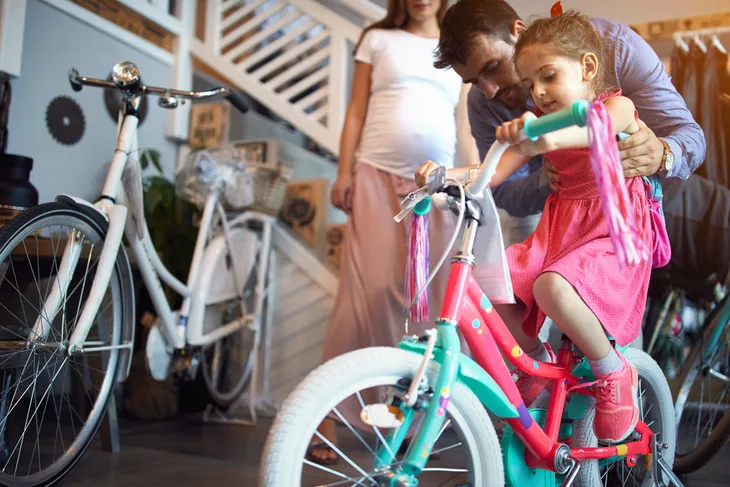It may be a skill that comes back naturally, but for many, learning to ride a bike is one of the most challenging childhood skills to master. It’s requires the ability to multi-task—balancing, pedaling, turning, stopping. No wonder kids get frustrated when learning to coordinate all the moving parts.
With a lot of practice and patience, kids generally learn to ride a bike successfully around the age of 5 or 6, but there is no golden age. As with any new skill, it’s best to wait until your child is ready. Here are 5 ways to help your kids learn how to ride a bike…
Start with a Tricycle
The three wheeled version of a bicycle allows children to become comfortable with the idea of a bike. Without having to worry about balancing, they can focus on mastering the pedals and steering.
Tricycles are also lower to the ground, so should they tumble and crash, it’s not as frightening as falling from a bike. But that’s not to say they don’t have to wear a helmet with riding a tricycle. Good helmet habits should always be enforced.
Use a Balance Bike
Balance bikes are great inventions because they eliminate the pedals and gears. It allows a child to focus on steering and the most important skill of riding a bike—balancing. To function properly, the balance bike needs to be small enough so the child can walk the bike while sitting comfortably in the saddle.
Once your child has mastered walking the bike around while sitting, the next step is to learn how to coast for short distances to develop the skills to balance the bike. Once they’re comfortable on the balance bike, you can introduce them to a real bike with pedals.
Training Wheels
Training wheels can help a child keep their balance and keep the bike upright, while they focus on pedalling, steering and stopping. Many children have learned to ride a bicycle successfully with the help of training wheels, but some experts say it slows the learning process down because they prevent the bike from leaning and can inhibit braking.
Once the training wheels are removed, the child can learn how to balance without the added support, but often kids find this experience frustrating. All of a sudden they are no longer able to ride their bike comfortably and many walk away from their bike until they’re ready to try again.
Buddy Up with a Tandem Bike
Not only is it a great way to spend time with your child, a tandem bike can help develop the skills your child will need to ride a bike on their own. Otherwise known as a trailer bike, a child’s bike is attached to their parent’s bike, but they have their own pedals. The parent is always in control, but the sense of balance, steering, and pedalling are practiced while riding a trailer bike.
For kids who get frustrated easily, this method builds confidence. With mom or dad right in front of them, they are able to focus on the skills required to ride a bike, without having to worry about falling off. Helmets should be worn by both child and parent when riding a tandem bike.
Learn How to Ride on a Bike
The traditional way to teach a kid to kid a bike is to put the child on a bike. Seems obvious, but with so many inventions and modifications to bicycles, parents are always presented with different choices. The old-fashion method may require more bandages then other choices, but it’s a time-tested technique.
As your child sits on the bike and peddles, the parent runs beside, helping to balance the child. Once the child is pedalling and up to a decent speed, the parent lets go and the child continues until he stops the bike or he crashes. This technique may seem harsh, but many children have learned to ride a bike like this. A newer approach to this technique is to find a grassy hill and allow you child to slowly ride down the hill, picking their feet up as the momentum carries them down. Once they’re comfortable, the pedalling is added.








